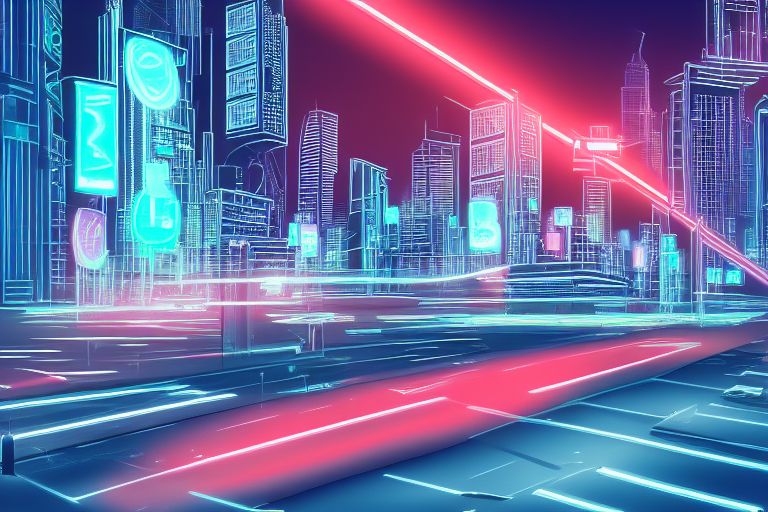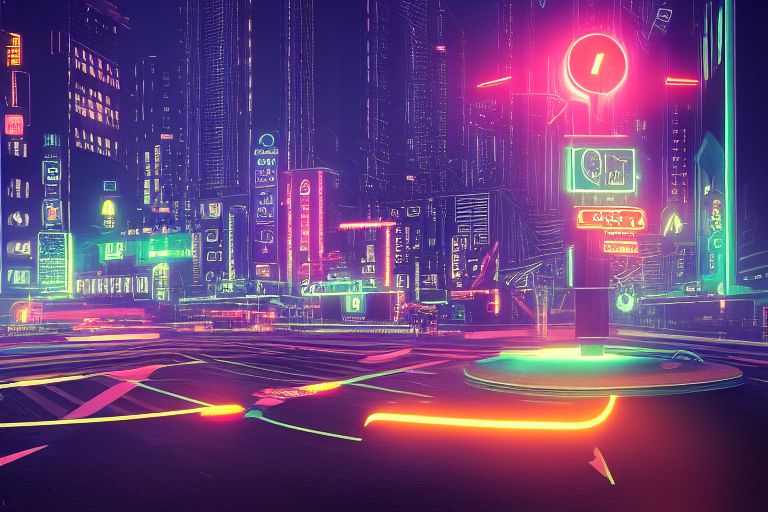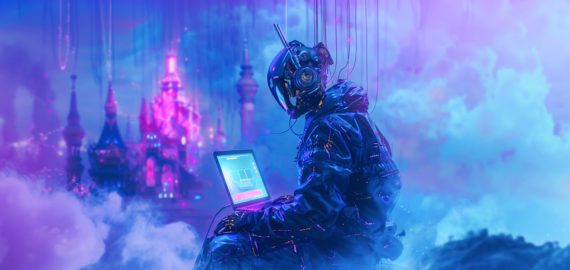Top Technologies Fueling the Metaverse Experience
In Brief
Innovative digital realms are crafting an engaging metaverse designed for the upcoming generation.
As the metaverse evolves, it encounters numerous hurdles that demand attention.
The metaverse embodies a three-dimensional digital universe navigable through an avatar, where activities such as gaming, virtual shopping, and visiting online cafes or cooperative workspaces take place. Selected features of the metaverse are already integrated into mainstream video games and tools designed for professional networking. Nonetheless, the broader metaverse concept remains under development.

While platforms like Decentraland and The Sandbox have launched exciting digital environments, the overarching concept of the metaverse is still fresh. As a result, many features are in the works. Nevertheless, top tech brands, including Meta (formerly Facebook), Microsoft, and Nvidia, are actively developing their own iterations of the metaverse.
Technology innovators are leveraging state-of-the-art advancements to craft an engaging virtual metaverse, powered by the likes of blockchain, AR & VR, 3D modeling, AI, and IoT.
What exactly is the Metaverse?
The metaverse exists as a 3D digital environment where users can traverse using avatars, engaging in activities such as gaming, shopping, or visiting virtual cafes and workplaces. Certain elements of the metaverse's functionality can already be found in popular gaming or online networking platforms; however, it's essential to note that the metaverse itself is still a work in progress.
While platforms like Decentraland and The Sandbox have launched exciting digital environments, the overarching concept of the metaverse is still fresh. As a result, many features are in the works. Nevertheless, top tech brands, including Meta (formerly Facebook), Microsoft, and Nvidia, are actively developing their own iterations of the metaverse.

Leading Technologies Behind the Metaverse
Technology innovators are leveraging state-of-the-art advancements to craft an engaging virtual metaverse, powered by the likes of blockchain, AR & VR, 3D modeling, AI, and IoT.
- Blockchain
- The Roles of Augmented Reality and Virtual Reality
- Artificial Intelligence
- Internet of Things
- 3D reconstruction
Blockchain
Blockchain stands as a revolutionary technology offering a decentralized and transparent method for establishing ownership, value transfer, governance, and interoperability in digital spaces. Cryptocurrencies allow seamless financial transactions within the 3D virtual landscape.
Decentraland exemplifies how blockchain technology integrates with the metaverse. In this virtual ecosystem, users can purchase digital real estate—land they can hold indefinitely. This land remains under their control, empowering them to create anything from houses to shops or monuments.
Another notable platform is The Sandbox, enabling users to design, experience, and monetize content and games in a captivating voxel-based universe. The Sandbox employs blockchain to ensure that users retain full ownership over their digital creations.
The Roles of Augmented Reality and Virtual Reality
Both AR and VR contribute to crafting digital experiences analogous to real-life environments. Yet, VR offers a more immersive experience by transporting users into a fully digital realm, while AR enriches the physical world with digital overlays.
Engaging VR environments come to life through 3D modeling and CG imagery. This technology is utilized to recreate stunningly realistic settings that evoke the real world.
Facebook is heavily investing in AR and VR to realize its vision of the metaverse. They've acquired Oculus, a leader in VR, while also developing AR eyewear and leveraging Instagram as an AR content platform.
Artificial Intelligence
Utilizing AI allows for the development of lifelike avatars that mimic natural human behavior and appearance. Furthermore, AI facilitates the creation of NPCs capable of meaningful interactions within digital spaces.
Nvidia, renowned for its gaming GPUs, employs AI technology to design realistic avatars with true-to-life facial features. Their GameWorks system effectively generates photorealistic characters.
Microsoft is similarly harnessing AI in avatar creation, having devised a project known as SoTA Real-time Avatars, which produces 3D avatars that closely resemble real individuals.
Internet of Things
The Internet of Things (IoT) connects various devices to the internet, enhancing data collection and providing insights about the environment.
Through IoT, we can establish a digital replica of the physical world, enabling the creation of environments that simulate real-world experiences.
Nvidia is also working on crafting a digital replica of Munich through the IoT. Their research team has developed a system to gather data from sensors and cameras, forming a 3D model of the city.
Microsoft is likewise involved in creating a digital twin of Seattle, utilizing a similar approach to develop a detailed 3D map leveraging sensor and camera data.
3D reconstruction
3D modeling technology enables the creation of digital representations of the physical environment, which can effectively recreate real-world settings.
Nvidia's use of 3D modeling helps produce a digital version of Munich, allowing researchers to compile data from various sensors and cameras into a comprehensive 3D layout.
Microsoft's efforts mirror this with their creation of a digital version of Seattle, employing sensor data to carefully construct a detailed 3D landscape.
Challenges of the Metaverse
While the metaverse is still in its infancy, there are plenty of obstacles that demand our focus.
Among the primary challenges is the need to devise a convincing and immersive digital environment. This can be achieved utilizing technologies such as 3D modeling, computer-generated visuals, and artificial intelligence.
Another significant hurdle is ensuring accessibility for all users. This can be tackled through innovations involving IoT and VR technologies.
Lastly, safeguarding the metaverse is essential. Employing advanced technologies like blockchain and cryptographic solutions can enhance security measures.
| Read more about Metaverse |
|---|
| 16 Top Universities for Studying Metaverse and Web3 |
The metaverse represents a virtual space constructed through 3D modeling, computer graphics, and artificial intelligence. It's important to note that the metaverse is still growing and faces numerous issues that require resolution.
Challenges such as creating authentic and immersive digital realms, ensuring widespread accessibility, and implementing robust security measures are pivotal.

Conclusion
The metaverse serves as a digital ecosystem built on advanced techniques like 3D modeling, CG imagery, and AI. As its development continues, addressing fundamental challenges remains critical.
Key obstacles include crafting a realistic and captivating digital space, achieving universal access, and ensuring security within the metaverse.
Additional Metaverse resources:
Disclaimer
In line with the Trust Project guidelines Please understand that the content provided here does not constitute legal, tax, investment, or financial advice of any kind. It’s crucial to only invest what you can afford to lose, and if there are any uncertainties, seeking professional guidance is advisable. For detailed information, we recommend reviewing the terms and conditions along with the help resources provided by the issuer or promoter. MetaversePost is dedicated to delivering precise and impartial reporting, but market conditions can shift unexpectedly.




